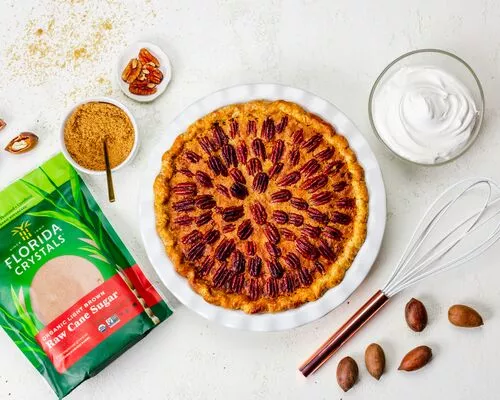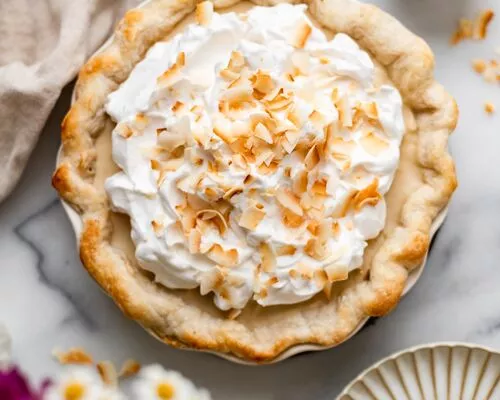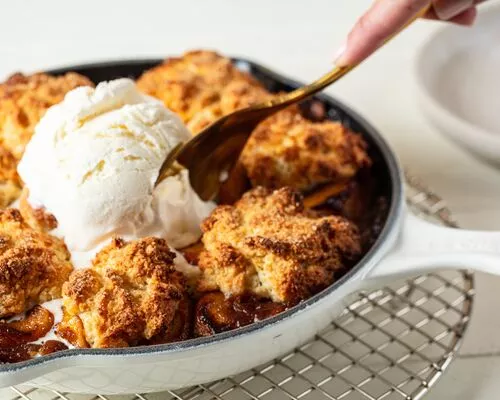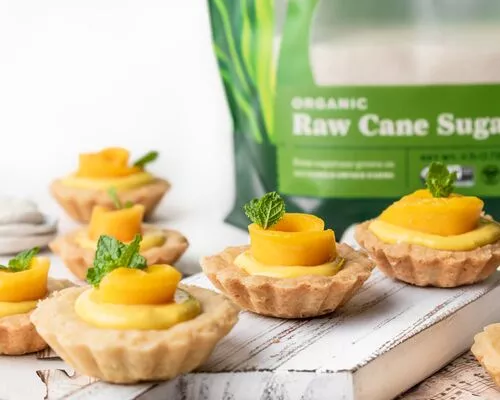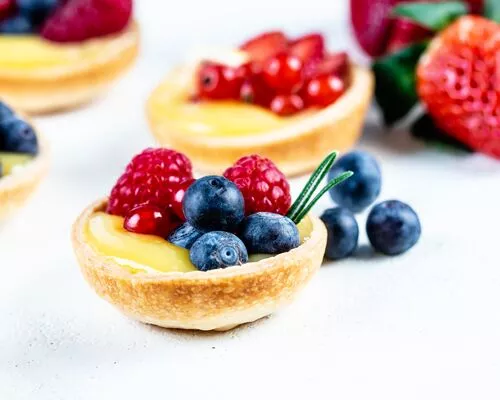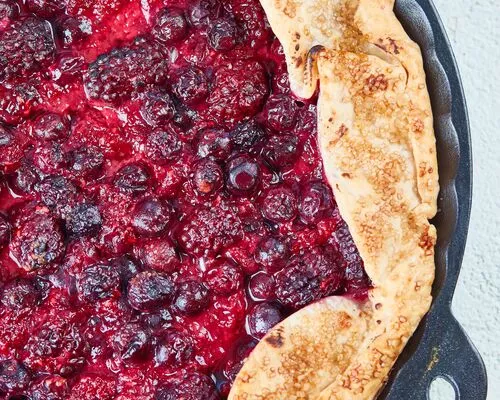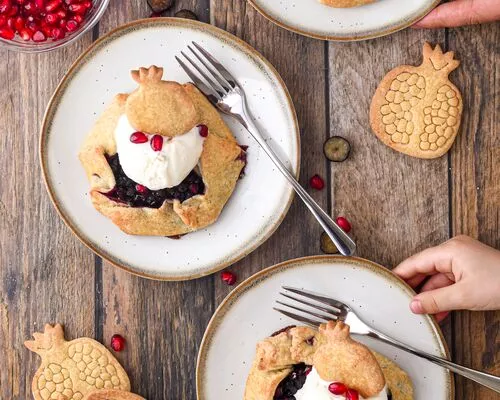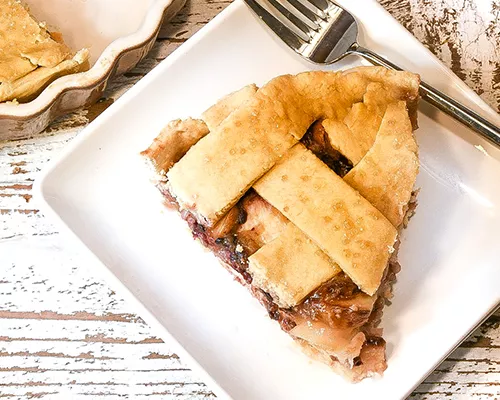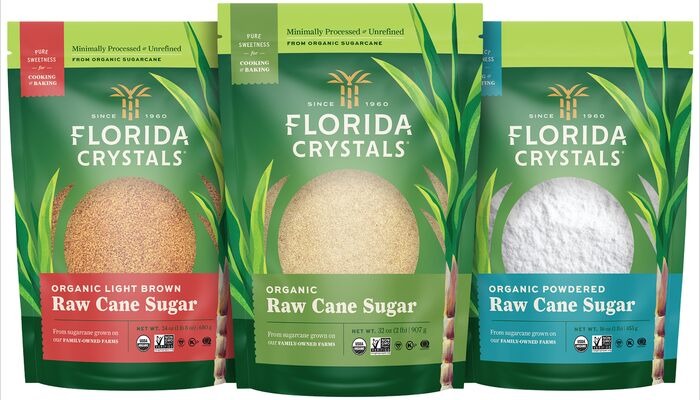
Step 1
Start by whisking together the flour, sugar, and arrowroot starch. Add in the cubed and frozen 8 tablespoons (113 g) vegan butter, and either use a pastry cutter or your hands to cut the vegan butter into the flour. The flour and butter should be about pea sized.
Step 2
Add in the chilled water, starting with just 5 tablespoons. Use a fork to mix the dough until you reach a shaggy consistency. You can add the remaining tablespoons, one at a time, if the flour is not fully absorbing into the dough.
Step 3
Lightly knead the dough against the side of the bowl to create a dough ball, being careful not to overwork the dough. Press the dough into a round disk and wrap it tightly in plastic wrap or parchment paper. Store in the fridge for 1 hour.
Step 4
Laminate the pie crust: After chilling the dough, lightly flour a clean surface and a rolling pin. Place the dough into the center of the floured surface. Roll the dough lengthwise to create a rectangle. Use a pastry brush to brush off the flour on top, then fold the dough into a square. This is the first lamination. Turn the dough 45 degrees either way and repeat, rolling it into a rectangle and folding again. Repeat two more times for a total of 4 times.
Step 5
Then roll the dough out to be 12” in diameter, picking up the disk every few rolls to ensure it’s not sticking to the surface. Carefully place the dough into your pie dish, and gently press the dough against the sides of the dish, being careful not to stretch the dough.
Step 6
Fold the edges of the pie dough underneath and crimp the edges of the pie dough however you’d like (pressing the thumb between your index and middle knuckles helps to create a classic pie crimping). Place the pie crust into the freezer to chill as you preheat the oven to 425F. Once the oven is preheated, remove the pie crust from the freezer.
Step 7
Poke a few holes into the bottom of the pie crust and place a piece of parchment paper down into the center of the crust. Add the pie weights* to the center of the crust. Brush the edges with 1 tablespoon of melted and cooled vegan butter. Place the pie crust into the oven to bake for 15 minutes.
Step 8
Remove the crust from the oven and remove the pie weights. Place the crust back into the oven to bake for 5-7 minutes or until the edges are golden. Then remove the crust from the oven to cool as you prepare the coconut cream pie filling.
Step 1
Whisk together the aquafaba, chickpea flour, and arrowroot starch in a small bowl together. Set aside.
Step 2
Add the coconut cream, coconut milk, and sugar to a medium saucepan, and whisk together. Turn the stovetop heat to medium-high and allow the mixture to come to a boil. Once boiling, reduce the heat to low, and as you whisk, pour in the chickpea flour mixture.
Step 3
Continue to whisk the mixture on low heat until it thickens to a pudding consistency, about 7 minutes. Once thickened, add in the coconut shreds, vegan butter and vanilla extract. Whisk until evenly distributed throughout the coconut cream mixture.
Step 4
Pour the coconut cream filling into the baked pie crust and place the pie into the fridge to set for 6+ hours, but ideally overnight.
Step 1
Once the pie is set, add the aquafaba and cream of tartar to a large bowl or a stand mixer with whisk attachment. Mix the aquafaba on high speed until foamy, then begin to add in 1 spoonful at a time of sugar as you continue to beat the aquafaba mixture. It will begin to fluff up and create stiff peaks.
Step 2
Once the stiff peaks are achieved (about 10 minutes), you can spoon the whipped cream on top of the coconut cream pie. Top with toasted coconut flakes. Slice the coconut cream pie and serve cold.
Store any leftover slices in an airtight container and in the fridge for up to 4 days.
Gluten-free: For a gluten-free coconut cream pie, please swap in gluten-free 1:1 baking flour (one that contains xanthan gum) at an equal ratio to the all-purpose flour.
Pie weights: If you don’t have pie weights, you can use dried rice, beans, or flour.


